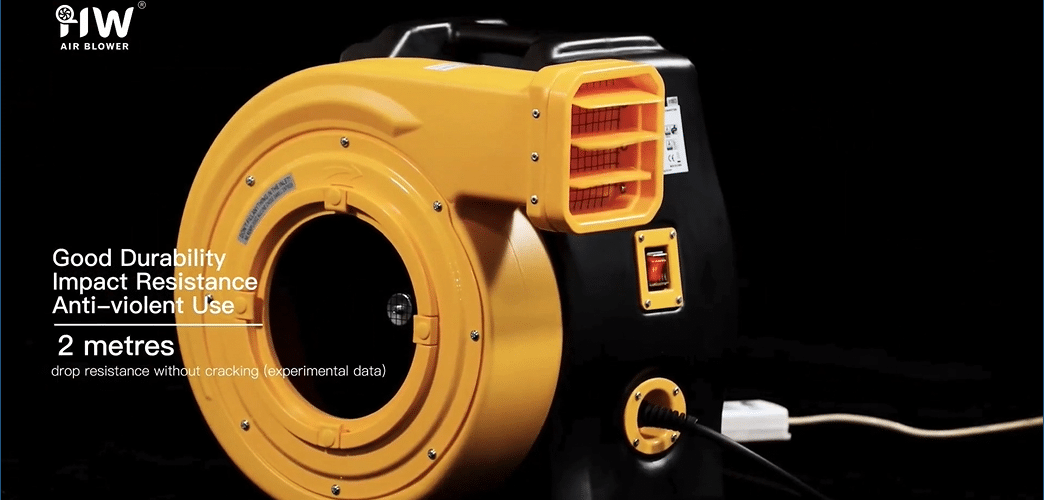
How to Safely Use Blowers on Wet Grass or Muddy Surfaces
Outdoor events sometimes require setting up inflatables on wet grass or muddy surfaces, especially in regions with unpredictable weather. While Huawei air blowers are designed for durability, additional precautions are essential to ensure safe and effective operation in these conditions. Here are key steps to safely use blowers on wet or muddy ground, protecting both the equipment and your event setup.
1. Elevate the Blower
To prevent the blower from coming into direct contact with wet or muddy ground, place it on a raised, dry surface. Use a sturdy plastic or wooden platform to lift the blower off the ground. This not only keeps the blower dry but also allows for better airflow, reducing the risk of overheating and contamination.
2. Use Ground Tarps or Mats
Lay down a waterproof tarp or mat under and around the blower setup area to create a dry, stable surface. This helps keep mud and moisture away from the blower’s base and any power connections, adding an extra layer of protection for safe operation.
3. Secure Electrical Connections
Wet conditions increase the risk of electrical hazards, so it’s crucial to protect all electrical connections. Use waterproof extension cords and cover any connections with protective weatherproof covers or electrical tape. If possible, connect the blower to a Ground Fault Circuit Interrupter (GFCI) outlet, which will shut off power automatically if any electrical instability is detected.
4. Position the Blower Away from Puddles
Check the area for puddles or waterlogged sections and position the blower as far away from these as possible. Keep the blower on the highest and driest section of the setup area, ideally with enough clearance so that if additional water pools, the blower remains unaffected.
5. Use Weather-Resistant Blower Models
If you frequently operate in damp conditions, consider using weather-resistant Huawei blowers. These models are specifically designed to handle outdoor elements better than standard models, with reinforced casings and materials that protect internal components from moisture damage.
6. Monitor the Blower During Operation
Regularly check the blower during the event to ensure it remains dry and stable. If rain increases or more mud accumulates, consider pausing the blower and adjusting the setup to prevent moisture from entering the motor. Keeping an eye on the blower allows you to address issues early and avoid potential equipment damage.
7. Avoid Overloading the Blower
Operating a blower under damp or muddy conditions can increase strain on the motor, so make sure the blower you’re using matches the inflatable’s power requirements. Using an appropriately powered blower minimizes strain and reduces the risk of overheating or power loss.
8. Plan for Quick Takedown in Case of Rain
If weather conditions worsen, have a plan to quickly disconnect and remove the blower from the wet area. Turn off the power before moving the blower to avoid electric shocks, and store it in a dry, covered space until it can be safely used again.
Conclusion: Ensure Safe Blower Operation on Wet or Muddy Surfaces
By following these precautions, you can safely operate Huawei air blowers on wet grass or muddy surfaces, reducing the risk of damage or electrical hazards. Implementing protective measures like elevating the blower, securing connections, and monitoring performance helps maintain reliable operation and ensures a smooth, safe experience for your clients.
Prepare for unpredictable weather by using Huawei blowers with these safety practices, allowing your rental business to operate confidently in various outdoor conditions.